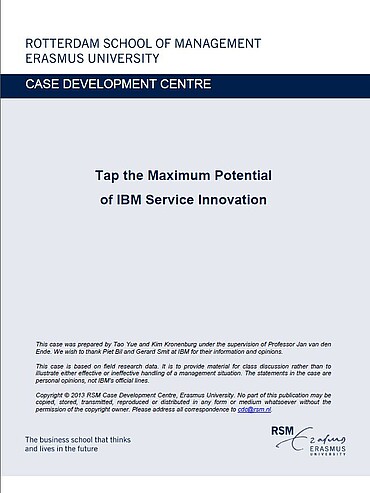description
IBM finds itself to be in an environment where the development of new technology goes fast, due to which they should rethink their strategy. They already have an idea in mind; smart enterprise, but will this strategic shift be a successful one?
Abstract
IBM is a leading business-to-business (B2B) company offering a comprehensive portfolio of services, software, and hardware to chiefly large corporations. However, looming threats stemming from the fast development of technology such as cloud computing and mobile technology have forced IBM to rethink on its strategy. IBM has to decide whether to transform itself into a “smart enterprise” delivering ready-to-use applications from the cloud to businesses, as well as to consumers. Would this strategic shift lead IBM to success or distract it from its core business? If the shift is inevitable, how would IBM’s innovation system – the engine behind its growth – have to change in order to make this transition successful? The case shows how IBM has transformed from a predominantly product firm to a service firm and how it organizes the development and delivery of different types of services alongside products. By analyzing IBM’s service delivery, students can learn how to successfully set up service provision in a product company. It also triggers students to explore how a traditional large corporation like IBM can capitalize on its innovations to move ahead in a fast changing market. The open question for students is whether IBM should enter the consumer segment with its service business.
usage
This case can be used to understand the how services are innovated, organized and delivered and besides that what are the differences between all sorts of different kinds of innovations.
Objective
The case serves the following main teaching objectives: 1. To understand the differences between innovation process in a service firm and in a product firm. 2. To understand how services are innovated, organized and delivered. 3. To learn to set up service provision in a product company. 4. To understand the differences between regional and global innovation. 5. To understand the differences between proactive and reactive innovation.
Citation Note
Based on Field Research; 10 pages.
Follow the 'handle' link to access the Case Study on RePub.
For EUR staff members: the Teaching Note is available on request, you can contact us at rsm.nl/cdc/contact/
For external users: follow the link to purchase the Case Study and the Teaching Note.
